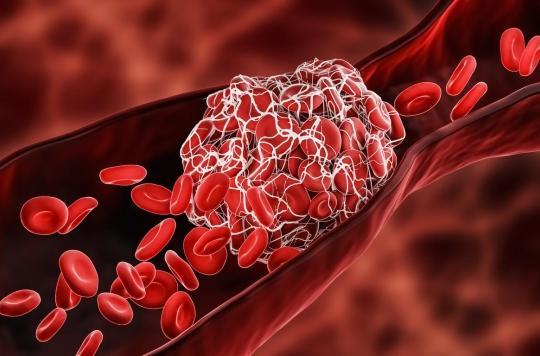According to a study, men with prostate cancer have a higher risk of serious blood clots.

- According to a study, men with prostate cancer have a 50% higher risk of suffering from venous thromboembolism.
- In France, prostate cancer is the most common cancer in men with nearly 50,000 new cases per year.
50% higher risk of developing serious blood clots for patients suffering from prostate cancer: this is the conclusion of a study carried out by European scientists, published in the online journal BMJ Open
The period most at risk would be the first six months following the diagnosis of cancer, can we read in the conclusions of the researchers.
Prostate cancer is a malignant tumor that develops from the tissues of the prostate, a male reproductive and urinary tract organ.
One of the leading causes of death
Venous thromboembolism (VTE) is the formation of a thrombus or blood clot that can obstruct blood flow and in some cases migrate and cause a pulmonary embolism, according to Public Health France.
It is one of the leading causes of death in people with cancer, second only to death from the cancer itself.
Several factors contribute to the increase in the hypercoagulable state – which is the tendency to form blood clots inappropriately in the blood vessels (veins, arteries, capillaries) in cancer patients: factors related to treatment, such as cancer therapy and surgery, and personal factors such as age, obesity, history of thromboembolism and other comorbidities.
Since prostate cancer is most commonly diagnosed in middle-aged and older men, many men with this type of cancer could potentially suffer from venous thromboembolism.
92,105 men with cancer
To carry out their work, the scientists studied data from 92,105 men with prostate cancer and 466,241 men of the same age without prostate cancer, collected in Sweden between 2007 and 2017.
They found that 3.2% of men in the prostate cancer group had experienced a VTE within about five years of their cancer diagnosis compared to 2.1% of men in the other group.
According to the researchers, approximately seven out of 1,000 men with prostate cancer would develop a VTE each year compared to only four out of 1,000 men without prostate cancer.
The authors concluded:The magnitude of the increased risk of VTE in men with prostate cancer observed in our study is lower than that observed for other types of cancer, as shown in previous studies, and is likely attributable to the high proportion of men with localized disease and a low risk of cancer progression. Despite this, physicians treating men with prostate cancer should be aware of the markedly increased risk of VTE in these men, particularly in the first six months after cancer diagnosis, in order to ensure proper diagnosis. rapid VTE.“



















